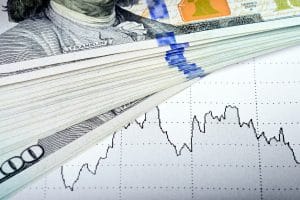
The US dollar once again surged ahead on the foreign exchange markets yesterday after it was revealed that President Donald Trump’s administration is considering setting up new tariffs on Chinese imports.
According to a source in the administration, the tariffs on $200bn of goods, which currently sit at 10%, may be raised as high as 25% instead. Although this has not yet been confirmed, it is believed that Trump may even make the announcement today, on Wednesday 1 August.
As a result, the dollar surged ahead by 0.4% against the yuan to a position of 6.8306.
The news came in among a range of difficult economic developments for China. Factory sector data showed that growth in the industry was at its slowest pace for eight months as a result of declining exports.
China’s central bank also made moves to keep the currency as low as possible on Wednesday as part of its plan to defend itself against the ongoing economic problems in the country.
China’s problems still managed to have a profound knock-on effect for currencies around the rest of the world, too.
Australia, for example, is often affected by movements in the Chinese yuan because of the close economic relationship between the two nations. It dropped by 0.2% over the course of the day as a result of the issues.
As is now increasingly common, a decline in the value of the yuan and the currencies which rely on it meant that there was an opportunity for the dollar to surge instead – and it rose by 0.15% to 94.631 against a group of major world currencies which act as an indicator for the dollar’s value.
Elsewhere in the currency markets, rate decisions by a number of major central banks were high on the agenda yesterday.
The Bank of Japan (BoJ) announced on Tuesday that it would preserve its current interest rate level at -0.1%.
Although it did not give an exact timeframe, it also said that it would keep these low interest rates in place for a long period of time, which met market expectations.
The BoJ did, however, announce some moves towards flexibility. It said, for example, that it would introduce some room for manoeuvres into its government bond buying plans.
The next big announcement will come on Wednesday, when the Federal Reserve in Washington, DC will present its next monetary policy decision.
The Fed altered rates at its last meeting, so it is considered unlikely that they will change this time around. However, it is possible that there will be some indication of future steps on the interest rate front, so investors are likely to watch with interest.
The Bank of England (BoE) will round off the latest major monetary policy decision season on Thursday with an announcement on interest rates. It is believed that the London-based central bank is likely to push up rates, although this is also not certain.
If the move goes ahead, it is probable that rates will rise to 0.75%, which would represent the second rise since the credit crunch of 2008.
 Between 74-89% of CFD traders lose
Between 74-89% of CFD traders lose  Your capital is at risk
Your capital is at risk  Your capital is at risk
Your capital is at risk  Your capital is at risk
Your capital is at risk